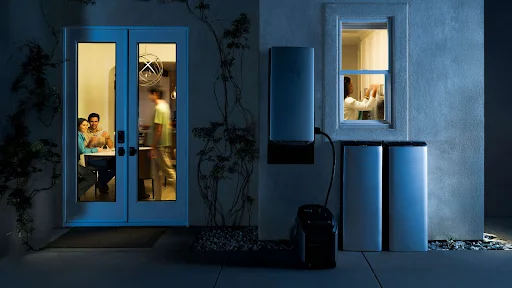More homeowners are turning to renewable energy to protect their homes from power outages and high utility bills. Combining solar panels with a home backup system is one of the smartest ways to gain both independence and long-term savings. Before adding solar power to your backup setup, it helps to understand how the two systems work together and what factors ensure a reliable installation.
1. Why Combine Solar and Backup Power
A backup power system alone can keep your lights on during an outage, but it depends on stored or generated energy that eventually runs out. Adding solar panels creates a sustainable cycle. When sunlight is available, the panels recharge your batteries or reduce how much power you draw from the grid.
This integration not only extends your backup duration but also lowers your everyday energy costs. Solar energy reduces dependence on fuel or grid electricity, giving you more control over your household’s energy future. For many homeowners, the combination means peace of mind and lower monthly expenses at the same time.
You’ll love this next read — explore a related post that builds on today’s ideas.
2. Understand How Solar Power and Backup Systems Work Together
Solar panels convert sunlight into electricity. During normal operation, that energy powers your home and charges your backup batteries if available. When the grid fails, the backup system automatically isolates your house and supplies stored power.
Without batteries, a solar array alone cannot operate safely during a blackout, because it would try to send electricity back into the grid. That’s why pairing panels with a storage system or transfer switch is essential. The result is a closed circuit that lets your home run independently until power returns.
Modern systems use smart inverters that manage this process automatically. They decide when to charge the batteries, when to use stored energy, and when to draw from the grid—all without your manual control.
3. Evaluate Your Energy Needs Before Installation
Before adding solar panels, calculate how much electricity your household typically uses. Look at your monthly utility bills to find your average kilowatt-hour consumption. Identify peak usage periods, such as evenings or weekends, when both family activity and energy demand are highest.
If your backup system already exists, check its capacity and compatibility. A small unit designed for short-term outages might not be able to store or process all the energy produced by your new panels. You may need an inverter upgrade or additional batteries to balance the system.
It’s also wise to decide which appliances should run on solar power. Essential items like refrigerators, lighting, and communication devices take priority. Creating an energy priority list helps your installer size the system correctly.
4. Choose the Right Size and Configuration
System size depends on roof space, local sunlight hours, and the amount of energy you want to produce. A larger array generates more power, but it also costs more and requires greater structural support.
Work with a professional installer to calculate both your energy goals and practical limitations. In some cases, you may install fewer panels now but leave room for expansion later. This approach keeps your initial cost manageable while allowing future upgrades.
Configuration also matters. Panels can face different directions to capture morning or afternoon light. Battery capacity should match the solar array’s potential output, ensuring no energy is wasted. Properly balanced systems perform more efficiently and last longer.
5. Understand the Role of the Inverter
The inverter is the bridge between solar energy and your home’s electrical system. It converts direct current from solar panels into alternating current that household appliances can use.
There are three common inverter types:
- String inverters, which connect multiple panels together;
- Microinverters, which attach to individual panels and optimize performance;
- Hybrid inverters, which handle both solar input and battery charging.
If you’re adding solar to an existing backup setup, ask whether your current inverter can manage both functions. In many cases, upgrading to a hybrid inverter improves efficiency and reduces hardware complexity.
6. Battery Storage: Extending Solar Power’s Impact
A key advantage of adding solar to a backup system is energy storage. Batteries allow you to use solar energy at night or during cloudy days. Without storage, your panels produce energy only when sunlight is available, which limits independence.
Modern whole home battery backup systems can store enough power to run essential circuits for hours or even days. They recharge automatically when sunlight returns and can operate quietly indoors. This makes them perfect for homes that require continuous energy for medical devices, heating, or remote work.
When selecting batteries, compare capacity, lifespan, and warranty coverage. Lithium iron phosphate batteries, for instance, offer long cycle life and stable performance.
7. Check Local Regulations and Incentives
Before installation, review your local building codes and utility rules. Some areas require permits or inspections for solar systems, especially when they connect to the grid. Others offer generous incentives such as tax credits or rebates that can significantly reduce your costs.
If your utility supports net metering, you can earn credits for sending excess solar energy back to the grid. Even if your primary goal is backup power, these policies enhance long-term return on investment.
Make sure your installer handles all documentation and explains how your system complies with local regulations. Proper paperwork prevents delays and ensures safety approval.
8. Plan for Seasonal and Weather Variations
Solar performance changes with seasons. In summer, long daylight hours increase production, while winter clouds may reduce it. When designing your system, consider your region’s weather pattern and average sunlight levels.
If you live in an area prone to snow or hurricanes, ask about panel mounting options that withstand harsh conditions. Elevated racks or tilt adjustments can improve efficiency and durability. Battery systems should also have temperature management features to prevent overheating or freezing.
9. Maintenance and Monitoring
Once your solar and backup systems work together, maintenance keeps them reliable. Solar panels need occasional cleaning to remove dust and leaves. Batteries require monitoring to ensure proper charge levels.
Many modern systems include mobile apps that show energy generation, consumption, and battery status in real time. These tools let you identify performance changes early and schedule service when needed.
For optimal operation, have your installer perform a professional checkup once a year. A brief inspection ensures wiring, inverters, and batteries stay in good condition for years to come.
10. Cost Considerations and Long-Term Savings
Adding solar to your home backup system involves upfront costs, but the benefits accumulate over time. Solar panels can last 25 years or more, and they dramatically reduce electricity bills. Battery systems provide security against rising energy prices and unpredictable outages.
When calculating payback, include savings from reduced utility use, potential incentives, and avoided fuel or maintenance expenses. Many homeowners recover their investment within five to ten years depending on local rates and sunlight exposure.
Over time, your solar-backed system not only pays for itself but continues to produce free, clean energy long after traditional generators have worn out.
11. Work with Qualified Professionals
Integrating solar and backup systems involves electrical complexity. Always hire certified installers who understand both solar design and home power integration. They will ensure your wiring, grounding, and safety switches meet local standards.
Professional installers also optimize placement for maximum sunlight exposure and proper airflow around inverters and batteries. They can size your system accurately to avoid mismatched components or power bottlenecks.
Avoid cutting corners with unverified contractors. A well-designed system not only performs better but also qualifies for full warranty and insurance coverage.
12. Future-Proofing Your Energy System
Technology evolves quickly. New inverters, smarter batteries, and improved solar panels arrive every year. When adding solar power to your backup system, consider scalability. Choose products that allow expansion or firmware updates so your setup remains compatible with future advancements.
If you plan to buy an electric vehicle or add more appliances, you can easily upgrade your capacity without rebuilding from scratch. This flexibility protects your investment for the long term.
Expand your world — explore more insights at Buzz Blog that power creativity and success.

